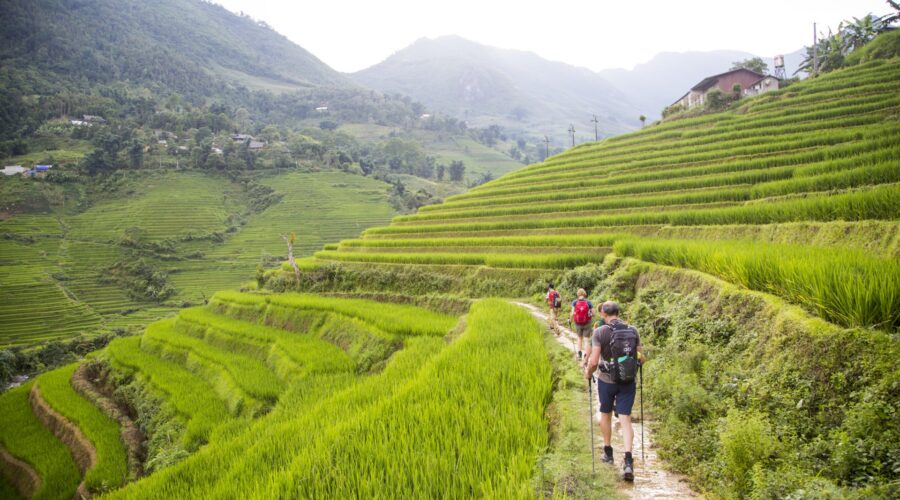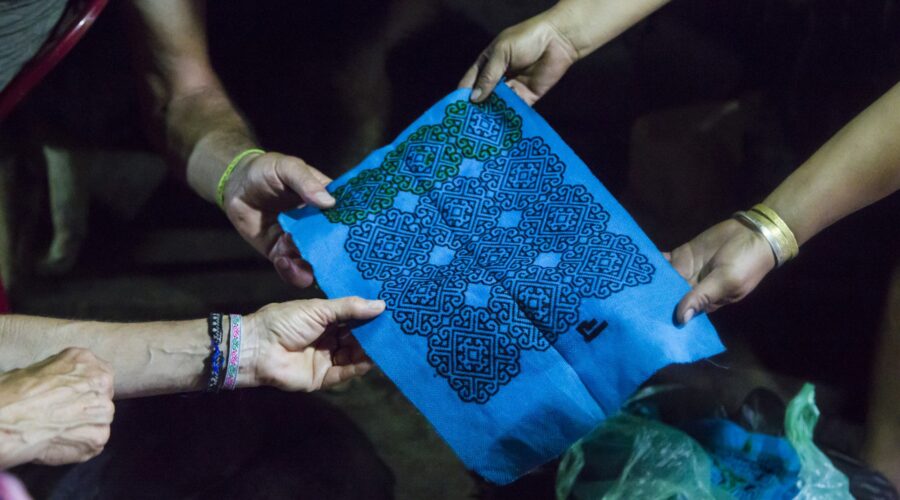THE GUIDE TO SAPA TOURS
Hiking through the rice terraces with mud on your boots, cycling downhill with the wind in your hair, or driving from spot to spot while absorbing the culture? This question reflects the three main categories of tours in Sapa: Hiking tours, biking tours, and visits by motorized transport to markets and villages.
But how to choose the right tour for you? With most visitors only spending a few days in Sapa, it’s important to know what (and how) you want to explore before you arrive. Read on to see what the options are – and see what’s best for you.
Note: All tours are guided in and around Sapa. Arranging your own route without a guide isn’t advised. Not only does this requirement prevent you from getting lost, it also provides a much-needed income boost for the locals.
Sapa Hiking Tours
- Hiking is the most flexible way to explore the scenery, with options ranging from a few hours to a few days. If you have your heart set on tours spanning two or more days, hiking is far and away the best option. An added bonus to multi-day hikes is staying in charming homestays along the way, where you can get a glimpse of the local way of life.
- Hiking is also the best way to absorb the different types of Sapa scenery, with trails that pass through the thick jungles, rice terraces, and villages. It’s easy to miss the details on a bicycle, motorbike, or by car. But with your own two feet and nothing else, you’ll be able to take it all in. If you’re a keen photographer, you’ll find hiking tours offer the best shots, too.
- You’re also likely to learn more during a hiking tour. Many guides are from the local Hmong ethnic minority group and they speak excellent English. They’re happy to answer questions about their culture and way of life, and they’ll also be able to give insight into the other ethnic groups. Moving slowly allows more time to learn from the different minority groups you visit, such as how the Dao forage for medicinal herbs on the highest slopes or why the Tay live in stilt houses near water.
- If you’re traveling with kids and they like (or at least don’t hate) walking, then hiking tours will be safer than cycling, and more fun than traveling by car. Arranging easy, child-friendly hiking trails is simple around Sapa. Just remember to be clear and honest about the levels of fitness of your kids.

Sapa Cycling Tours
Note: Always book with a reputable tour operator to make sure you have safe bicycles!
If you prefer taking in scenery at speed, simply hop on a bike. Though not as popular as hiking, cycling tours are still easy to arrange both before and after you arrive in Sapa. Some companies have also started offering electronic bikes so if you need that extra help up those steep climbs, you’re in luck. Take a look below to work out if cycling is right for you.
- You’ll cover more ground with two wheels than you will on two feet, so if you’re short on time and want to see as much as possible then biking is for you. You’ll see more of the scenery, but you’ll pass through a greater number of villages, too. In just one day of cycling, it’s possible to visit four or five different villages, each one inhabited by a different ethnic group.
- Cycling is also a good option if you want to visit more remote villages. Sapa is no longer a secret, with millions of domestic and international tourists visiting each year. Many of the villages closest to Sapa receive an unpleasant number of visitors, especially during high season (summer and autumn). But the further you go, the fewer the people.
- If you like to challenge yourself while traveling, then cycling (or mountain biking) is a great way to take on the hills. Most hiking trails are designed to be accessible and you may find it difficult arranging challenging hikes. You might also have trouble finding guides that can keep up. The winding ribbons of road carved into the mountains surrounding Sapa, however, offer sweaty climbs and thrilling downhill runs. Just make sure you tell your tour operator and guide that you want it tough.

Markets and Villages
- Exploring by motorized transport is easy to arrange, so don’t worry if you’re not an active traveler. Just keep in mind that you may miss out on some of the better views along the way.
- Exploring by car or motorbike allows you to spend more time in the villages and opens up handicraft opportunities, such as learning about the Hmong textile dying tradition or Dao jewelry making.
- Have you seen the mesmerizing textiles that you find across the northern mountains? If shopping is an important reason for your visit, and you want to purchase direct from the villages, then traveling by car or motorbike saves you heaving heavy items up and down mountains.